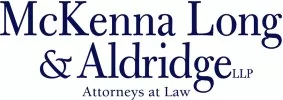The European Commission recently issued two documents relating to nanotechnologies, inaugurating a new area of interest and exploring possible future regulation.
"Nanotechnology refers to science and technology at the nano-scale of atoms and molecules, and to the scientific principles and new properties that can be understood and mastered when operating in this domain. Such properties can then be observed and exploited at the micro- or macro-scale, for example, for the development of materials and devices with novel functions and performance."
Specifically, the Commission issued a preliminary risk analysis on nanotechnologies (NTs) based on a workshop, organized in Brussels by the European Commission's DG SANCO on March 1-2, 2004. The Commission subsequently also issued a Communication on a European Strategy for Nanotechnology (COM(2004)338 of May 12, 2004).
Preliminary Risk Analysis on Nanotechnologies
The workshop, entitled "Mapping Out Nano Risks", consisted of a meeting of an international, interdisciplinary group of seventeen experts aimed at examining the hazards, exposure, and risks to human health and the environment potentially associated with materials derived from NTs within the next 3-5 years. Five policy options evolved during the meeting: "laisser-faire attitude"; moratorium on NTs; voluntary measures; launching comprehensive regulatory process specific to NTs; using and adapting existing legislative structures supplemented by non-legislative measures. The experts considered the latter option as being the only realistic one and adopted 12 recommendations in this regard.
The Workshop issued 12 recommendations on NTs:
- developing a nomenclature for intermediate and finished engineered nanoparticles (NPs) (preferably international);
- assigning a new Chemical Abstract Service (CAS) registry number to engineered NPs. Each engineered NP, like a new chemical, would be assigned a new, unique CAS number; hence new toxicology testing and safety data sheets are required;
- advancing science by collecting data on exposure, dose response, toxicology, ecotoxicology, and persistence;
- developing measurement instruments;
- developing standardized risk assessment methods;
- promoting good practices with respect to risk assessment, human and environmental health and safety and stakeholders security;
- creating institutions to monitor the development of NTs (development of nomenclature, development of standards, evaluation of need for further regulation);
- establishing a dialogue with the public and with industry on the decision processes (to avoid acceptance problems such as those encountered with biotechnology);
- developing guidelines and standards on risk assessment, on production and handling, and on commercialization of intermediate and finished manufactured NPs;
- revising existing regulation to take the specificities of nanotechnologies into account (e.g., lowering the 1 ton registration threshold in the future REACH Regulation);
- maximizing containment of free engineered NPs until their possible hazards have been identified and addressed or until they have been rendered innocuous;
- striving for elimination whenever possible and otherwise minimizing the production and unintentional release of NPs.
Towards a European Strategy for Nanotechnology
Following the risk analysis report, the Commission adopted a Communication on a Strategy for NTs. The Communication merely consists of general recommendations on which the Council and European Parliament are asked to give an opinion. It does not contain concrete legislative proposals, but could lead to several actions in the coming years.
The Commission's Communication proposes to develop five dynamics to stimulate progress:
- increase the investment in R&D;
- develop infrastructures such as "pole of excellence" of European dimension;
- invest in human resources and education;
- industrial innovation: investigation into the perspectives and conditions for the successful industrial exploitation of nanotechnologies, harmonization and standardization;
- integrate the societal dimension by developing dialogue with stakeholders and consumers.
The Communication also indicates that NTs present new challenges for the assessment and the management of risks and in terms of production, disposal, handling, storage and transport. The Commission argues that "the potential risks of nanotechnologies to public health, the environment and consumers will require evaluating the possible re-use of existing data and generating new, nanotechnology-specific data on toxicology and ecotoxicology (including dose response and exposure data). This also calls for examining and, if required, adjusting risk assessment methods."
The actions proposed in this field are less developed than the risk analysis report's policy options. However, they contain:
- identification and addressing safety concerns (real or perceived) at the earliest possible stage;
- reinforcing support for the integration of health and environmental risks and other related aspects into R&D activities together with specific studies;
- supporting the generation of data on toxicology and ecotoxicology (including dose response data) and evaluate potential human and environmental exposure;
- promotion by Member States of the adjustment, if necessary, of risk assessment procedures to take into account the particular issues associated with nanotechnology applications;
- promotion by Member States of the integration of assessment of risk to human health, the environment, consumers and workers at all stages of the life cycle of the technology (including conception, R&D, manufacturing, distribution, use, and disposal).
The EU strategy also plans to develop international cooperation for the sharing of information as well as the definition of an international "code of good conduct", nomenclature and norms.
McKenna Long & Aldridge LLP is a full-service law firm of approximately 375 lawyers and public policy advisors. The firm provides business solutions in the areas of corporate law, government contracts, intellectual property and technology, complex litigation, public policy and regulatory affairs, real estate, environmental, energy and finance.
© 2004, McKenna Long & Aldridge LLP, 56 rue des Colonies (Box 14), B-1000 Brussels, Belgium
This article is for informational purposes only and does not constitute specific legal advice or opinions. Such advice and opinions are provided by the firm only upon engagement with respect to specific factual situations.


